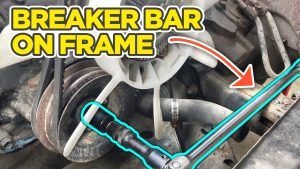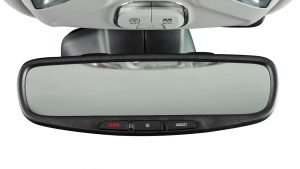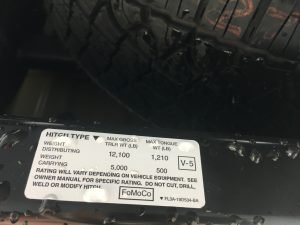Contents
How to Tell If Your Fuel Pump Is Bad: A Comprehensive Guide
Is your car sputtering, hesitating, or refusing to start? A failing fuel pump could be the culprit. This vital component delivers fuel from your tank to your engine, and when it malfunctions, your vehicle suffers. This guide will help you understand the signs of a bad fuel pump and what steps to take.
Understanding Your Fuel Pump’s Role:
Before diving into diagnostics, it’s crucial to grasp the fuel pump’s function. It’s an electric pump submerged in your fuel tank, responsible for pushing fuel under pressure to the engine’s fuel injectors. A malfunctioning pump can lead to insufficient fuel delivery, resulting in poor performance or complete engine failure.
Common Signs of a Failing Fuel Pump:
Several symptoms can indicate a struggling or failing fuel pump. Pay close attention to these warning signs:
-
Difficulty Starting: One of the most obvious signs is difficulty starting your vehicle. The engine might crank but fail to ignite, especially when the tank is low or the engine is hot. This points to insufficient fuel pressure.
-
Engine Hesitation or Stuttering: Experiencing sputtering or hesitation while accelerating is a clear indication that your engine isn’t receiving a consistent fuel supply. This often worsens under load (climbing hills, accelerating quickly).
-
Loss of Power: A significant drop in power or a noticeable lack of acceleration can signal a problem with fuel delivery. Your car might feel sluggish and unresponsive.
-
Whining Noise From the Fuel Tank: While not always present, a whining or buzzing sound emanating from the fuel tank area, particularly when the ignition is turned on, could indicate a failing fuel pump bearing.
-
Fuel Gauge Inaccuracy: Though less common, a malfunctioning fuel pump can sometimes interfere with the fuel level sensor, leading to inaccurate readings on your fuel gauge.
-
Engine Surging or Stalling: In more severe cases, a failing fuel pump can cause sudden surges in engine speed or complete engine stalling. This is a serious issue and requires immediate attention.
Step-by-Step Troubleshooting:
While diagnosing a fuel pump issue requires some mechanical understanding, you can perform a few basic checks before seeking professional help. Remember safety first! Always disconnect the negative battery terminal before attempting any work.
Step 1: Check Fuel Pressure (Advanced): This requires a fuel pressure gauge and some mechanical knowledge. Consult your vehicle’s repair manual for specific instructions on accessing the fuel pressure test port. Low pressure strongly suggests a fuel pump problem.
Step 2: Listen for the Fuel Pump Prime: Turn your ignition key to the “ON” position (without starting the engine). You should hear a brief humming sound from the fuel tank area. If you hear nothing, the pump might be faulty or not receiving power.
Step 3: Inspect the Fuel Filter: A clogged fuel filter can mimic the symptoms of a bad fuel pump. Locate your fuel filter (consult your owner’s manual) and visually inspect it for damage or excessive dirt buildup. A replacement might resolve the issue.
Step 4: Visual Inspection (if accessible): If you have experience with automotive repair and can safely access the fuel pump, you might visually inspect it for any obvious signs of damage. However, this is generally not recommended unless you have the necessary expertise.
Common Mistakes to Avoid:
- Ignoring early warning signs: Don’t wait until your car completely fails to start. Addressing potential issues early can save you money and potential damage to your engine.
- Jumping to conclusions: Many problems can mimic fuel pump issues. Systematic troubleshooting is key. Don’t replace the pump without checking other components.
- Attempting repairs beyond your skill level: Fuel pump replacement often requires specialized tools and knowledge. Seek professional help if you’re not comfortable performing the repair.
When to Seek Professional Help:
If you’ve performed the basic checks and are still unsure, or if you’re uncomfortable working on your vehicle’s fuel system, it’s best to take your car to a qualified mechanic. They possess the necessary tools and expertise to diagnose and repair the problem efficiently and safely.
By carefully observing your vehicle’s performance and following these steps, you can better understand if your fuel pump is the source of the problem. Remember, early detection and appropriate action are key to preventing more significant engine damage and ensuring your vehicle’s reliable operation.
FAQ
Q. My car won’t start. Is it definitely a bad fuel pump?
A. No, a car that won’t start can have many causes, from a dead battery to a faulty ignition switch. While a bad fuel pump is a possibility, it’s not the only one. Several other components need to work correctly for a car to start, including the starter motor, alternator, and ignition system. You should troubleshoot other potential issues before assuming it’s the fuel pump.
Q. What are some common symptoms of a failing fuel pump?
A. Besides a complete failure to start, a failing fuel pump might exhibit symptoms like difficulty starting the engine (especially when hot), a sputtering or hesitant engine, a loss of power during acceleration, a whining noise from the fuel tank area, or a noticeable decrease in fuel efficiency. Note that these symptoms can also indicate other problems.
Q. How can I check the fuel pressure to see if my fuel pump is bad?
A. Checking fuel pressure requires a fuel pressure gauge and usually involves connecting it to the fuel rail. This is a more advanced diagnostic step and might require specialized tools and knowledge. Incorrectly performing this check can be dangerous due to the high pressure and flammable nature of gasoline. It’s often best to consult a professional mechanic for this test.
Q. Can I test the fuel pump myself without a pressure gauge?
A. You can perform a basic test by listening for the fuel pump’s prime. Turn the ignition key to the “on” position (without starting the engine). You should hear a brief humming sound from the fuel tank area for a few seconds. If you don’t hear this sound, the pump might be faulty or not receiving power. However, the absence of the humming sound doesn’t definitively confirm a bad fuel pump; it simply suggests a possible problem.
Q. How much does it typically cost to replace a fuel pump?
A. The cost of replacing a fuel pump varies significantly depending on the make and model of your vehicle, the location of the fuel pump (in-tank or external), the labor costs in your area, and the cost of the replacement part. It can range from a few hundred dollars to well over a thousand dollars. Getting multiple quotes from different mechanics is advisable before proceeding with the repair.
Q. My car is running rough, but only sometimes. Could it still be the fuel pump?
A. Intermittent problems are notoriously difficult to diagnose. While a failing fuel pump could cause rough running that comes and goes, it’s less likely than other issues causing inconsistent performance. Things like a faulty mass air flow sensor, spark plug issues, or problems within the fuel delivery system itself (like clogged fuel filters or injectors) are more likely culprits for intermittent rough running. A comprehensive diagnostic check is recommended.
Related Articles
How to Check Fuel Pump
How to Check Your Fuel Pump: A Step-by-Step Guide Is your car struggling to start, sputtering, or lacking power? A faulty fuel pump could be the culpr…
How to Test Fuel Pump
How to Test a Fuel Pump: A Step-by-Step Guide Is your car struggling to start, sputtering, or lacking power? A faulty fuel pump could be the culprit. …
How Much to Fix Fuel Pump
How Much Does it Cost to Fix a Fuel Pump? A Comprehensive Guide A malfunctioning fuel pump can leave you stranded, so understanding the costs associat…
Affiliate Disclosure: As an Amazon Associate, I earn from qualifying purchases made through links on this site.






